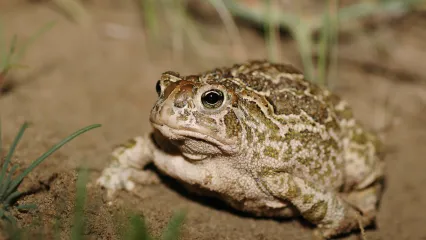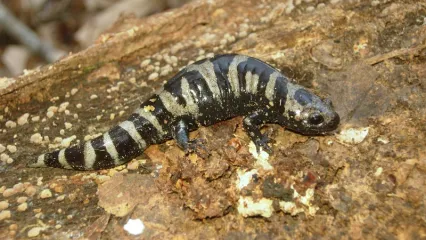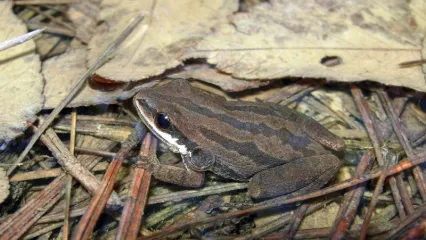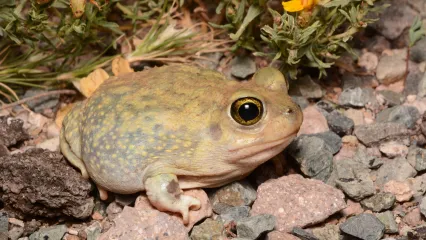
Description
Great Plains toads are locally common but rarely seen outside of rainy periods. Their skin is light yellow, brown, greenish, or gray with large characteristic dark green or brown spots. The spots appear to be outlined because of the lighter ground color. The cranial crests are widely spaced posteriorly but merge on the head and form a bony “boss” between the eyes.
The small tadpoles of this species are mostly black, but as they grow, the tadpoles develop iridophores, which give them a brassy coloration. The fins are clear with scattered brassy pigmentation.
The calls of Great Plains toads consist of a long, loud trill. They are heard only after heavy rains in late spring and early summer. The calls can be heard from long distances and may be deafening at short distances.
Size
Great Plains toads are medium- to large-sized toads, varying from 1 ½ to 4 inches in length.
Habitat
In North America, the Great Plains toad occurs throughout the Central Plains, including parts of New Mexico and Arizona, and extending into California; their range extends south into Mexico and north into Canada.
Life Cycle
Like most toads, Great Plains toads are explosive breeders, emerging to breed in spring after heavy rainfall. They prefer prairie habitats, usually with sandy soil. Choruses form in temporary pools, flooded fields, buffalo wallows, and similar bodies of water. They avoid muddy water, preferring clear pools. Depending on body size, females deposit varying numbers of eggs; an average clutch is about 10,000 eggs. Tadpoles require about two months to transform under normal conditions, but they may transform more quickly if temperatures are warm.
Great Plains toads feed on small insects and spiders.
How To Observe
These toads are rarely seen and emerge only after heavy rains. They are excellent burrowers and spend time underground when conditions are too hot, dry, cold, or otherwise unfavorable.
(This profile was created by Dr. Laurie Vitt as part of a partnership between the Wildlife Department and the Sam Noble Oklahoma Museum of Natural History. It was funded as part of a larger grant to survey and inventory amphibians and reptiles of the Wildlife Management Areas of Oklahoma: T-35-P-1.)


